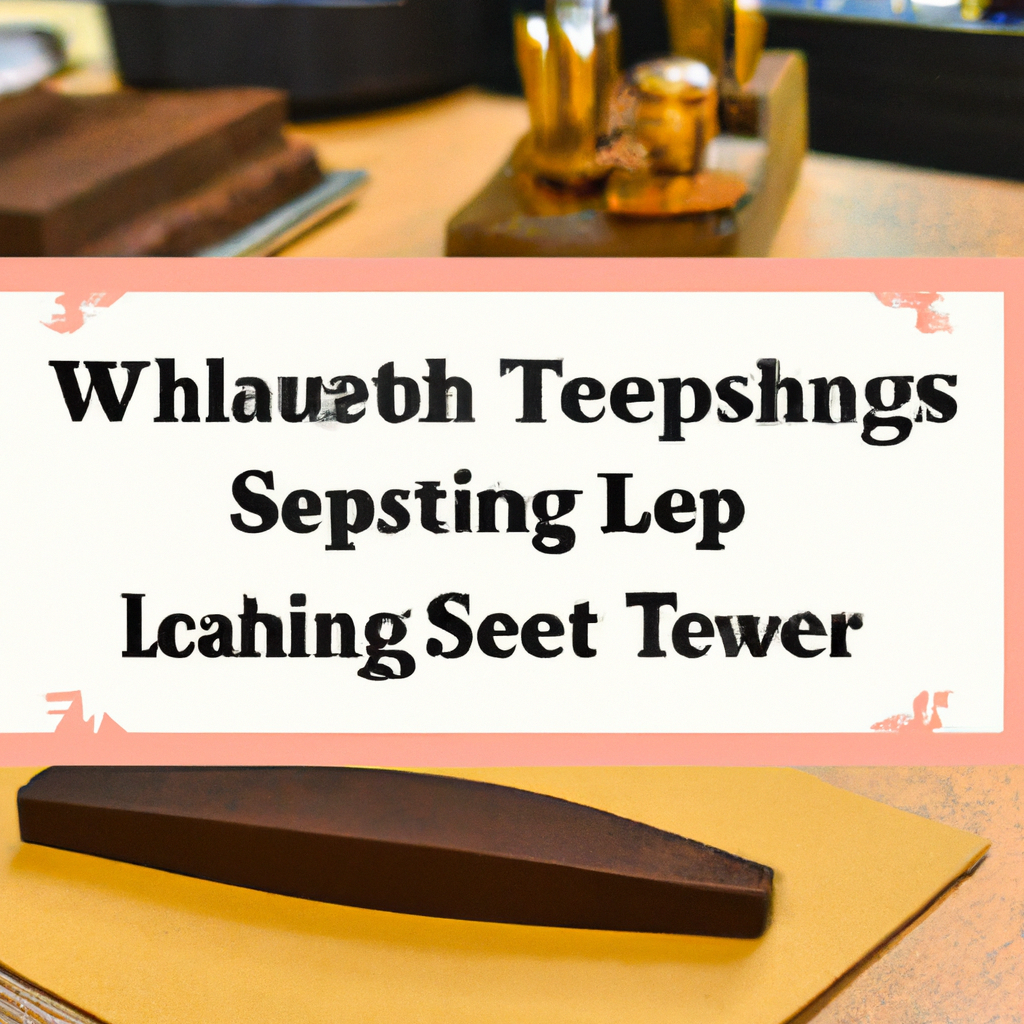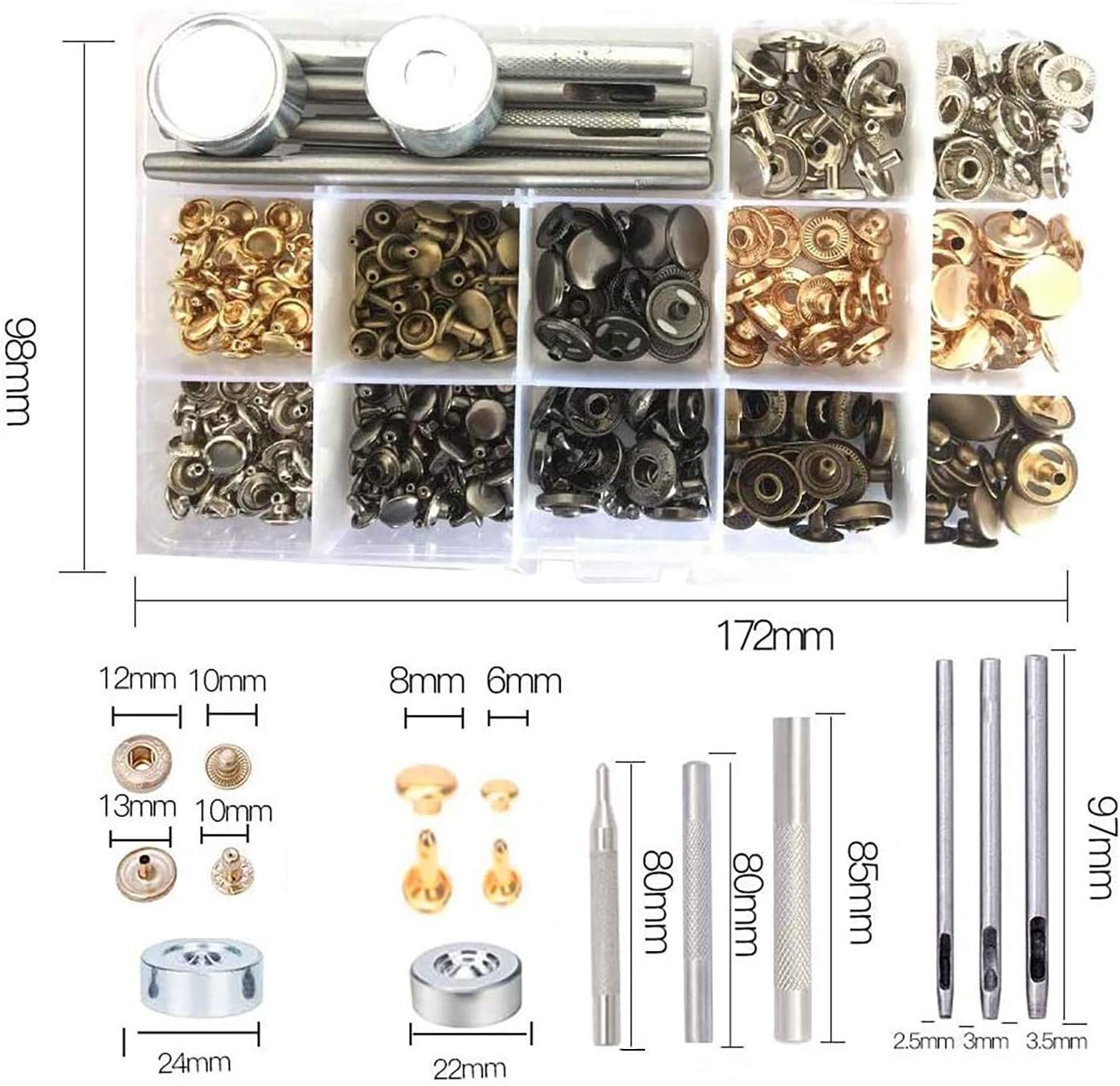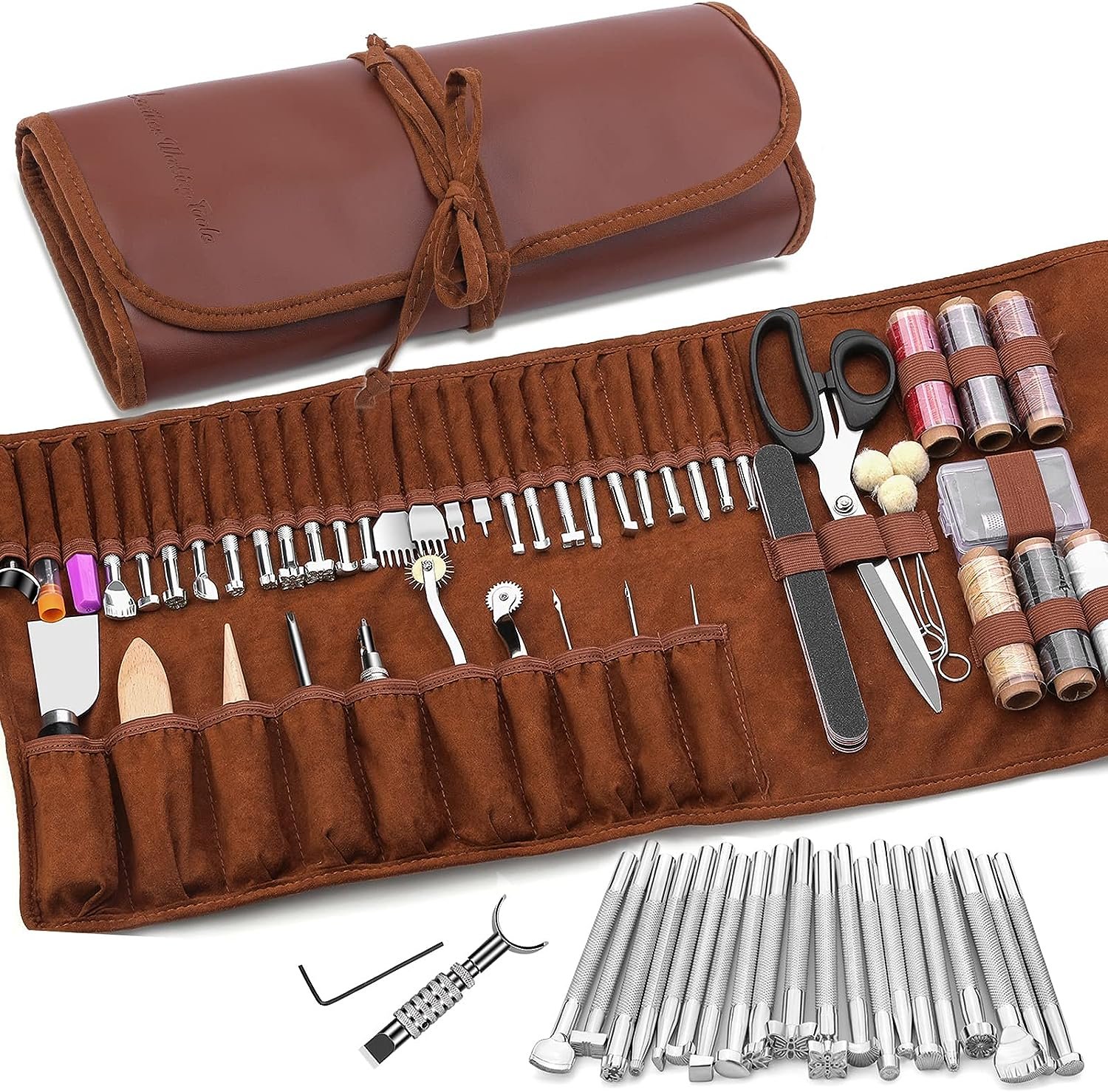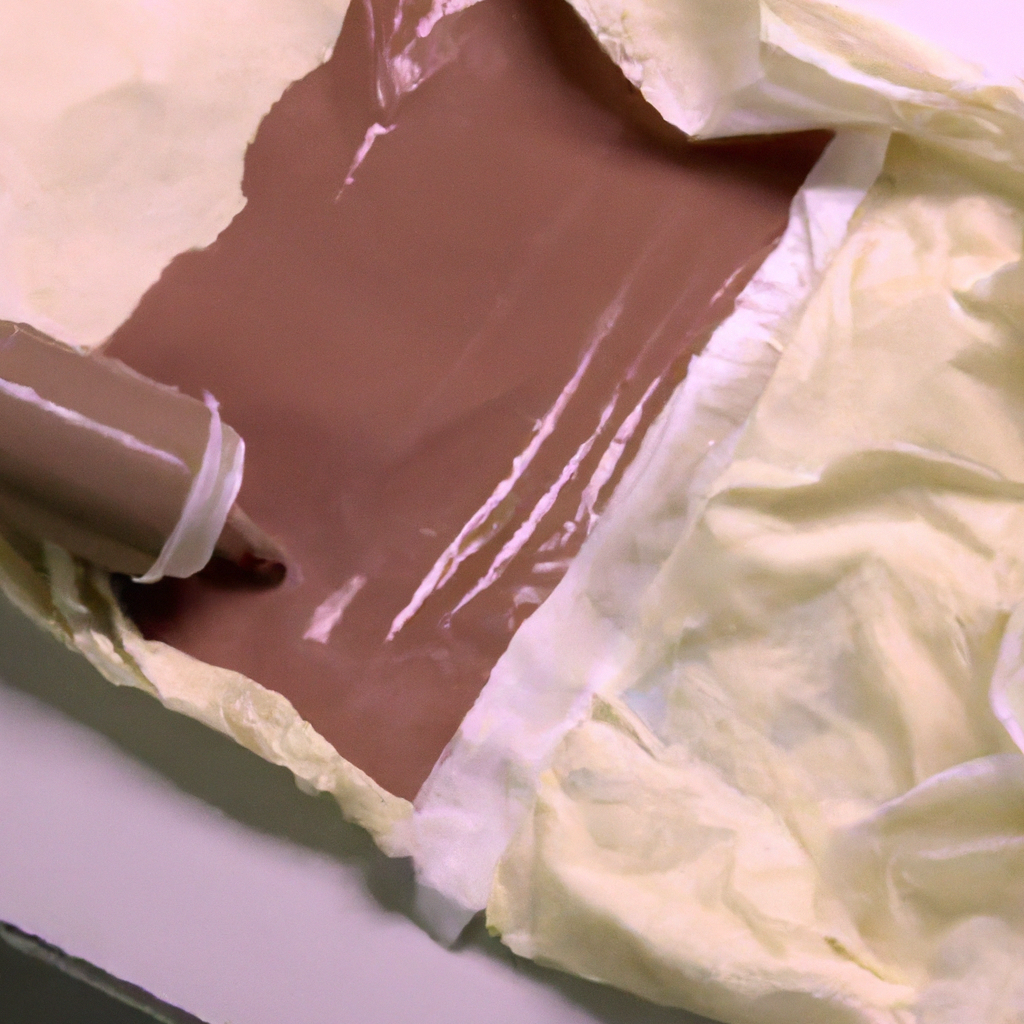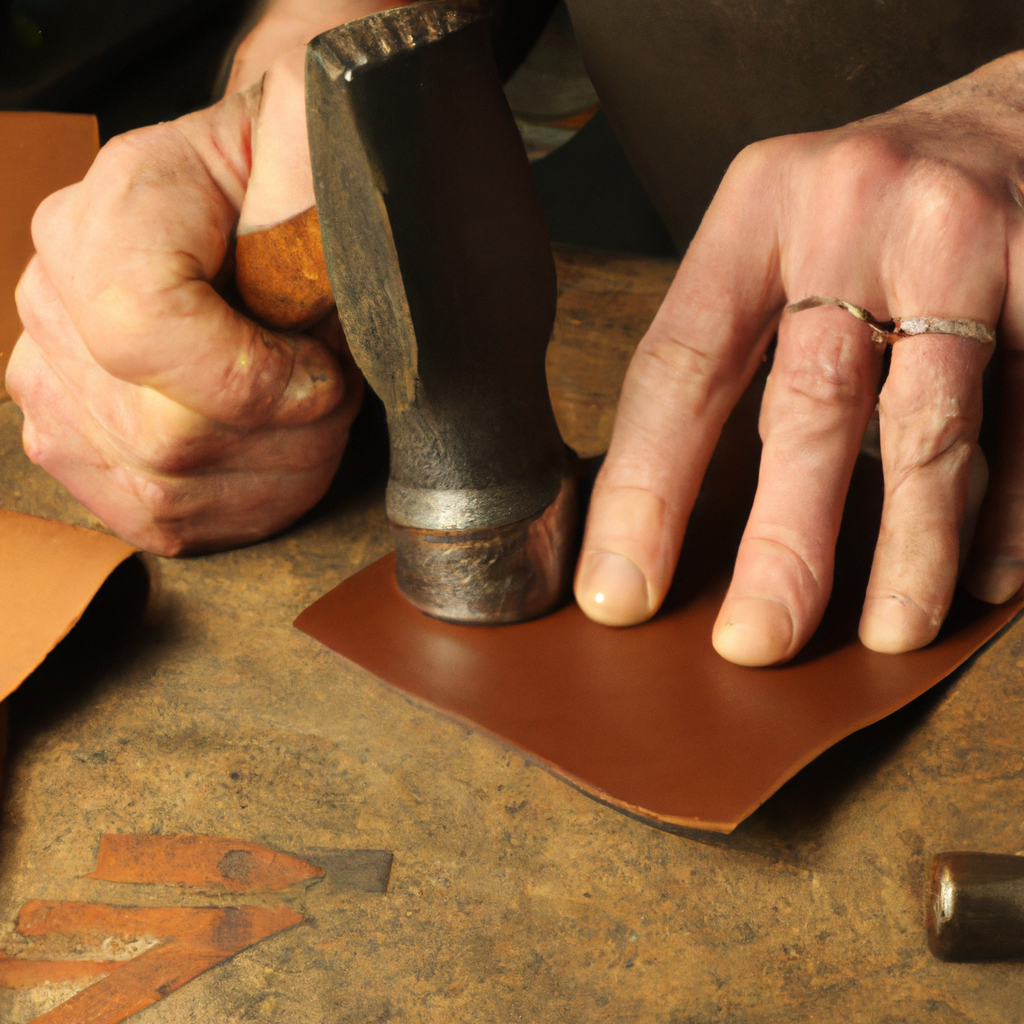Looking to get started in the world of leather stamping? Whether you’re a hobbyist or aspiring leather craftsman, finding the right tools is essential. In this article, we’ll explore some of the best entry level tools for basic leather stamping. From essentials like mallets and stamps to optional add-ons that can enhance your creations, we’ll provide a comprehensive guide to help you begin your leather stamping journey. Get ready to unleash your creativity and elevate your leatherwork to the next level with these must-have tools.

1. Leather Stamps
When it comes to basic leather stamping, having the right tools is essential. Leather stamps are one of the primary tools you’ll need to create beautiful and intricate designs on leather. There are various types of leather stamps available in the market, each serving a different purpose. Let’s explore the different types of leather stamps you can consider for your entry-level leather stamping journey.1.1. Traditional Stamps
Traditional leather stamps are commonly used and are perfect for beginners. These stamps are typically made of stainless steel and come in a wide range of designs, from simple shapes to intricate patterns. Traditional stamps are easy to handle and provide clean and consistent impressions on the leather. They are suitable for various leather projects, including belts, wallets, and keychains. With traditional stamps, you can easily personalize your leather items and make them stand out.1.2. 3D Stamps
If you want to add depth and dimension to your leather projects, 3D stamps are a fantastic option. These stamps create raised impressions on the leather, giving your designs a unique and eye-catching appearance. With 3D stamps, you can create intricate textures and patterns that stand out from the flat surface of the leather. They are ideal for adding a touch of elegance to your leather accessories or creating detailed decorations on larger leather pieces like bags and upholstery.1.3. Background Stamps
Background stamps are designed to add texture and depth to your leather projects. These stamps are used to create a background pattern or texture, providing a visually appealing backdrop to your main design. Background stamps can simulate various textures, such as basketweave, floral patterns, or even animal prints. By combining different background stamps with traditional or 3D stamps, you can create stunning and complex designs on your leather creations.2. Mallet or Hammer
To properly imprint the leather stamps onto the leather surface, you will need a mallet or hammer. The choice between a mallet or hammer depends on personal preference and the desired impact on the leather. Mallets are typically made of rawhide or nylon, providing a softer blow and reducing the risk of damaging the stamps. Hammers, on the other hand, offer more force and control, making them suitable for projects that require deeper impressions or thick leather. Whichever option you choose, make sure to select a mallet or hammer that feels comfortable in your hand and allows you to control the force applied.3. Leather Punches
Leather punches are essential tools for creating holes in leather, whether for functional purposes like stitching or decorative elements like lacing. There are various types of leather punches available, each catering to different hole shapes and sizes. Let’s take a closer look at some commonly used leather punches for basic leatherwork.3.1. Round Punches
Round punches are the most versatile and frequently used leather punches. They create clean, circular holes in the leather with precision. Round punches are available in different sizes, allowing you to choose the perfect diameter for your project needs. These punches are ideal for creating holes for rivets, stitching, or adding decorative elements like conchos.3.2. Oval Punches
If you prefer elongated holes for your leather projects, oval punches are a great choice. These punches create oval-shaped holes that can be used for functional purposes, such as belts or straps, or for decorative elements like braiding or lacing. Oval punches provide a unique and stylish touch to your leather creations.3.3. Slot Punches
Slot punches are designed to create elongated slots in leather, perfect for accommodating buckles, belt loops, or other fastening mechanisms. These punches are ideal for making precise slots that are both functional and aesthetically pleasing. Slot punches come in different sizes, allowing you to choose the width that matches your project requirements.
4. Cutting Tools
When working with leather, cutting tools are crucial for achieving clean and precise cuts. Here are some commonly used cutting tools for basic leatherwork:4.1. Utility Knife
A utility knife is a versatile cutting tool that can handle various types and thicknesses of leather. It features a retractable blade, allowing you to adjust the cutting depth as needed. Utility knives are perfect for straight cuts, curved cuts, or intricate designs. Make sure to use a sharp blade and exercise caution while cutting to ensure clean and safe results.4.2. Rotary Cutter
Rotary cutters are especially useful when working with thicker or tougher leather. These cutters feature a round blade that rolls smoothly along the leather surface, making it easier to cut through multiple layers or resistant materials. Rotary cutters provide precise cuts and are excellent for projects that require speed and efficiency.4.3. Strap Cutter
For projects that involve cutting long and narrow strips of leather, a strap cutter is a valuable tool. It allows you to cut consistent widths of leather strips, ensuring professional-looking results. Strap cutters typically have adjustable guides, allowing you to set the desired width and achieve uniform strips for belts, straps, or other leather accessories.5. Cutting Mat
To protect your working surface and extend the lifespan of your cutting tools, a cutting mat is an essential investment. Cutting mats are made of self-healing materials that prevent the blade from cutting through the surface. They also provide a stable and non-slip surface for cutting leather, ensuring accurate and safe cuts. Cutting mats are available in various sizes, so choose one that suits your working area and the size of your leather projects.6. Leather Dye
Leather dye is necessary for adding color and enhancing the appearance of your leather creations. There are different types of leather dyes available, each offering unique characteristics and application methods. Here are three commonly used types of leather dye:6.1. Alcohol Dye
Alcohol-based leather dyes are fast-drying and provide excellent color penetration into the leather fibers. They offer vibrant and intense colors, making them suitable for projects that require bold and striking shades. Alcohol dyes are easy to apply and allow for layering or blending colors to achieve the desired effect.6.2. Water-based Dye
Water-based leather dyes are more environmentally friendly and have a milder odor compared to alcohol dyes. They provide rich and opaque colors that can be easily diluted to create different levels of transparency. Water-based dyes are suitable for various leather types and offer versatility in terms of color customization and mixing.6.3. Oil Dye
Oil-based leather dyes provide deep and rich colors with a slightly longer drying time compared to alcohol or water-based dyes. They offer excellent color saturation and can enhance the natural characteristics and texture of the leather. Oil dyes are perfect for projects that require a rustic or vintage look.7. Leather Conditioner
Leather conditioner is essential for maintaining the quality and longevity of your leather items. It nourishes the leather, replenishes its natural oils, and keeps it soft and supple. Leather conditioners come in various forms, such as creams, lotions, or oils. Regular application of leather conditioner not only keeps your leather items looking and feeling great but also helps prevent them from drying out, cracking, or becoming brittle.8. Leather Staining Tools
Leather staining tools are used to apply stains or finishes to your leather projects, giving them a polished and professional appearance. Here are three commonly used leather staining tools:8.1. Wool Daubers
Wool daubers are versatile applicators that allow for precise and even distribution of stains or finishes on the leather. They are perfect for small or intricate areas that require controlled staining. Wool daubers provide a smooth and consistent application, ensuring an excellent finish on your leather creations.8.2. Foam Brushes
Foam brushes are great tools for applying stains or finishes to larger surface areas. They provide an even and smooth application and can cover large areas quickly. Foam brushes are inexpensive and disposable, making them convenient and suitable for various staining or finishing projects.8.3. Cotton Balls
Cotton balls are simple and readily available tools for staining or finishing small areas of leather. They are ideal for projects that require fine detailing or reaching tight corners. Cotton balls allow for precise control over the staining or finishing process, ensuring a neat and professional result.9. Rivet Setter
Rivet setters are indispensable tools for securely attaching rivets to leather items. They come in various sizes and can accommodate different rivet types and diameters. Rivet setters ensure that rivets are properly set into the leather, providing a secure and durable connection. Whether you’re working on belts, bags, or bracelets, a rivet setter is a must-have tool for your leatherwork toolkit.How Do I Use Basic Leather Stamping Tools to Attach Snaps or Fasteners?
When using basic leather stamping tools to attach snaps or fasteners, it’s important to consider the types of leather snaps you’re working with. Make sure to choose the appropriate tools for your specific snap type, and use a mallet to firmly secure the snaps into the leather for a long-lasting hold.

